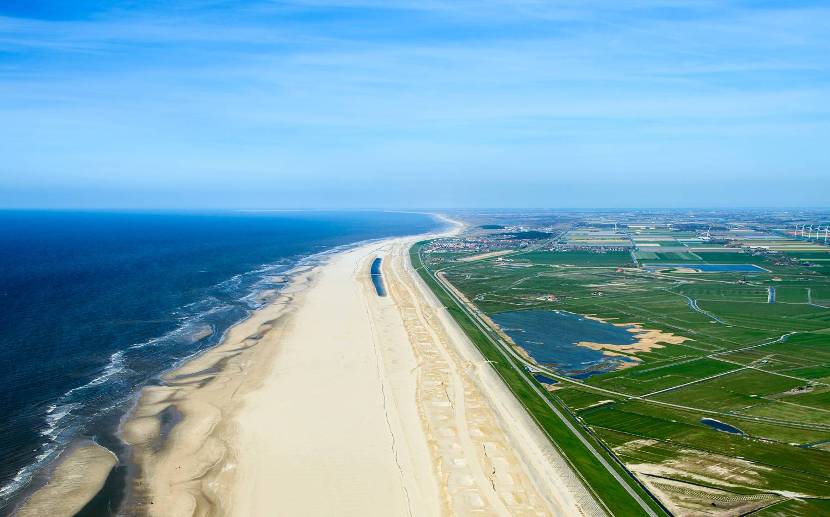Delta Programme 2016 Presented to the House
"The work really only begins now." That is the most important message of the Delta Programme 2016 (DP2016) which the Cabinet presented to the House of Representatives on Prinsjesdag (the state opening of parliament). DP2016 reports on the new phase the Delta Programme has entered after last year’s Delta Decisions and the selection of preferential strategies. Delta Programme Commissioner Wim Kuijken: ‘It is a good thing that in our country, since 2010, we have been working specifically on creating a safe and liveable delta, for today and the future. If we want to prevent flooding and significant economic loss, we have to work very hard in the decades ahead to keep our country safe and make it more resilient. And this is also a response to the changing climate. Everyone has noticed this in practice. Weather records are being broken. The Netherlands is facing a great challenge.’

Flood risk management
At the end of 2015, the Cabinet is expected to present to the House of Representatives a proposal to amend the Water Act. This amendment will set out the new flood risk management standards. Around the same time, the water authorities will set down the water management plans for the period up until 2021, and a new set of assessment and design instruments will be developed. Subsequently, based on the new standards, the next round of assessments can begin in 2017.
The implementation of the Meuse Projects, Room for the River, and Flood Protection programmes is in full swing. When scheduling the intended dyke improvements, the Flood Protection programme and the regions are actively searching for opportunities to link the flood risk management tasking with other ambitions in the area. In the Dalfsen Waterfront project, linkage with other functions and ambitions has already been put into practice. In this project, dyke improvement has been combined with building an esplanade and an apartment block.
Currently, flood risk management policy is in the transition phase of moving from the old policy to the new. Exploratory studies are being performed in anticipation of the new standards. Consulting with local residents and all stakeholders at an early stage is essential. Examples from practice, such as the Markermeer dykes, show that joint fact-finding regarding the significance of new insights contributes to trust and public support.
Freshwater supply
Customisation per region lies at the heart of the freshwater supply measures. All administrative agreements for the realisation and funding of the measures anticipated for 2016 to 2021 have been signed. Targeted investments are being made in the water system. Moreover, the first steps have been taken towards reaching agreements on the “supply levels”. With this new freshwater supply policy instrument, users will have more clarity about what they can count on, in normal situations as well as periods of drought. The instrument also provides a firm foundation for further measures regarding the availability of freshwater.
Spatial adaptation
A great deal of groundbreaking work is being done aimed at getting the water-robust and climate-resilient development (and redevelopment) of cities and towns on the agenda and put into practice. The Delta Programme is stimulating this work through so-called impact projects (including in Amsterdam, Rotterdam, the Land van Cuijck and the Wadden Islands), an incentive programme, and also, for example, a spatial adaptation knowledge portal. The first survey on spatial adaptation (conducted among the provinces, municipalities, water authorities and state agencies) shows that flooding, water safety, drought and heat are being giving proper attention on political agendas. There is a lot of work to be done.
The first steps have already been taken towards a water-resilient design of vital and vulnerable functions such as power plants, healthcare institutions and IT facilities.
Regions
All the regions (Rhine, Meuse, Southwest Delta, Rhine Estuary-Drechtsteden, Coast, Wadden Region, IJsselmeer Region and the Elevated Soils) are well on their way with elaborating the preferential strategies and implementing measures. For example:
In the area around the major rivers, ongoing multi-year infrastructure, spatial planning and transport (MIRT) studies are being used to make decisions on MIRT explorations for, for example, the Varik-Heesselt flood channel, the IJsselpoort River Climate Park and area development in Venlo.
In Rhine Estuary-Drechtsteden, among other things, area-based processes are running regarding the complex challenges in Alblasserwaard-Vijfheerenlanden and Dordrecht. The preferential strategy in the Southwest Delta is running simultaneously with the further elaboration of the Grevelingen-Zoommeer National Framework Vision.
In the Wadden Region, innovative barrier concepts are being investigated. These new dykes offer opportunities for tackling challenges that involve nature and recreation. These kinds of opportunities are also being mapped out in the development of robust natural shores in the IJsselmeer Region.
This year’s Delta Programme has also been established on the proposal of the Delta Programme Commissioner.
DP2016 contains a complete overview of the work being done on flood risk management, freshwater supply and spatial adaptation. In accordance with the Delta Act, the Delta Programme describes both the progress of work on the delta and the measures for the time ahead.